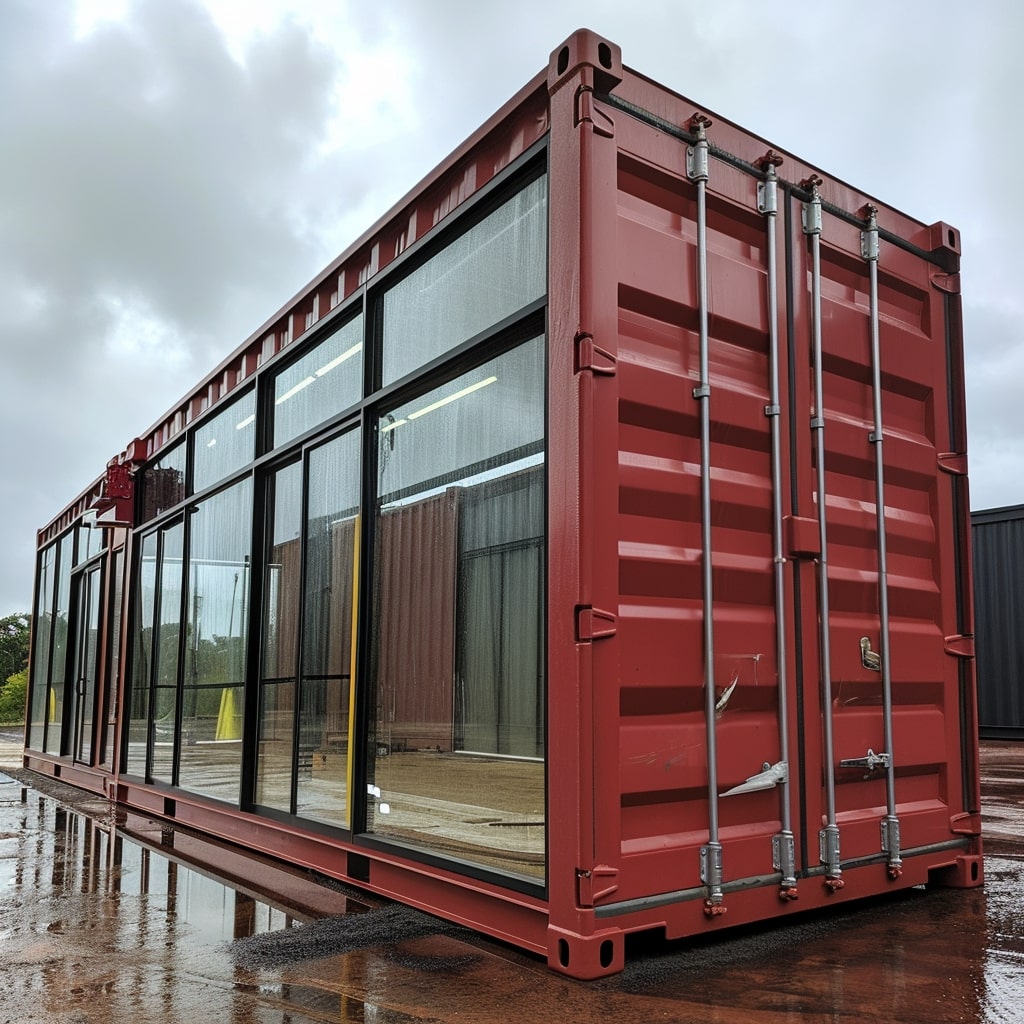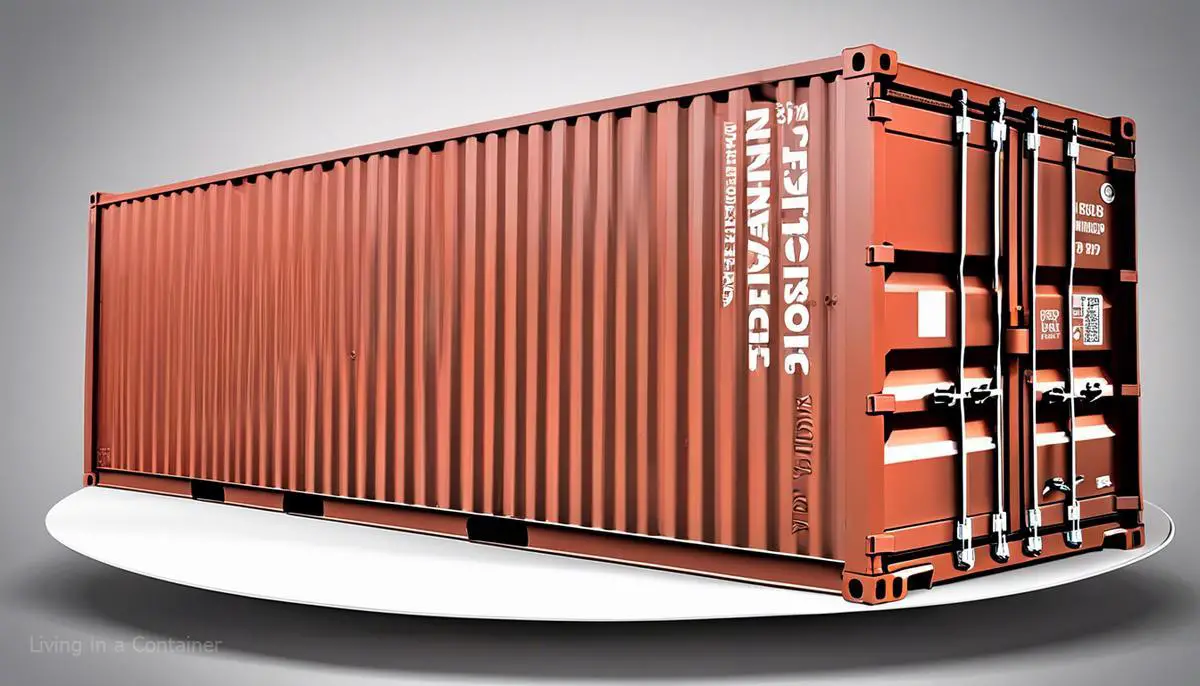In the interconnected globalized world, shipping containers represent the backbone of international trade, ensuring the smooth transportation of goods across vast oceans and continents.
A critical aspect that influences the efficiency of this system is the durability and lifespan of these containers. The structural life of these cabin-like steel structures is deeply anchored in their material design and construction methodologies, fascinatingly complex and awe-inspiring in their simplicity.
Being under constant exposure to harsh environmental conditions, shipping containers grapple with a slew of challenges that pose a considerable threat to their integrity and continued utility. As they undergo their predestined journey of wear and tear, their maintenance and upkeep become essential lifelines that can significantly extend their usage beyond the expected 25-year lifespan.
Even so, these tangible aspects are merely a facet of the overarching narrative, as the regulatory frameworks dictating the practical life and safety standards of shipping containers contribute crucially to defining their longevity.

Structural Life of Shipping Containers
Shipping containers are a marvel of modern logistics and engineering. Able to withstand brutal weather conditions, long transoceanic voyages, and the weight and pressure of hundreds of stacked containers, these steel boxes are the backbone of global trade. Several key structural elements contribute to their outstanding durability and lifespan.
Arguably, the primary element is the Corten steel, a type of weathering steel, used to construct the shipping containers. Unlike ordinary steel, Corten forms a protective rust patina when exposed to the elements, halting further corrosion. This enables the containers to resist the detrimental effects of salt, moisture, and other corrosive elements often encountered in maritime transport.
High weight-bearing capacity also plays a significant role in the durability of shipping containers. The corner posts and bottom rails are engineered to hold the full load, with corners being reinforced with thicker steel. This design permits the stacking of containers, many layers high, without deforming under the extreme weight.
Furthermore, structural rigidity is ensured by the corrugated panel walls on the sides, doors, and roof.
These wavy lines improved the strength-to-weight ratio of the container, enabling it to carry heavy loads while maintaining structural stability. Essentially, corrugation is a simple but efficient way to multiply the bending strength of flat steel sheets, making the containers erosion-resistant and capable of withstanding major impacts.
Moreover, the flooring material is also an essential part. Marine-grade plywood, typically 28mm thick, covers the steel cross-members at the bottom of the container. It provides a solid and stable surface resistant to water and load-related damage.
Lastly, the paint that covers the container plays a role in durability. Although it may seem trivial, the quality and type of paint used can determine how well a container stands up to environmental conditions. High-quality marine-grade paint withstands harsh weather and temperature variations, improving the container’s lifespan.
Influenced by these key elements, carefully constructed and adequately maintained shipping containers could serve their purpose for years, often surpassing their original 10-12 years lifespan in maritime transport. Their robust and resilient design further allows them to have second lives in a vast array of alternative uses, from housing and offices to pop-up shops and cafes. Indeed, the humble shipping container stands as a testament to the ingenious application of straightforward engineering principles that enhance strength, durability, and longevity.

Impact of Environmental Conditions on Container Lifespan
Environmental Influence on the Lifespan of Shipping Containers: An Examination
Shipping containers are ubiquitous in global logistics due to their strategic design and durability. But like all materials exposed to the elements, they are subject to external, environmental conditions which affect their longevity. To evaluate this further, it’s important to consider environmental factors like temperature, moisture, wind, and sunlight.
Temperature Variations and Material Expansion
Wide fluctuations in temperature can augment the rate at which shipping containers degrade. With contrast in extreme heat and cold, containers experience expansion and contraction. Over time, this repeated process may foster stress fractures, particularly at the welding points, weakening the overall integrity of the structure.
Moisture and Corrosion
Another environment-induced factor affecting shipping containers is moisture. Despite Corten steel’s aptitude to resist typical rust issues, an environment high in moisture or salinity, like coastal regions, will still promote accelerated corrosion. This becomes particularly relevant as shipping containers are more susceptible to rust at the base, where they often sit in pooled water or damp soil.
Wind Exposure and Structural Stress
High-wind regions pose additional concerns. Strong gusts may cause dynamic stress on the container structure while strong, sustained winds can induce a fluctuating pressure difference on opposite walls, impacting structural rigidity.
Sunlight Exposure and Exterior Degradation
Sunlight, another environmental factor, significantly influences the lifespan of containers. Long-term exposure to ultraviolet (UV) radiation degrades the paintwork, potentially fostering rust underneath. Additionally, UV exposure accelerates the breakdown of the marine-grade plywood flooring.
Mitigating Environmental Impacts
How, then, can one mitigate these environmental effects on shipping containers? One way is through thoughtful placement and orientation to limit exposure to harsh weather elements. Another involves regular maintenance, such as checking and repairing any rust spots or fractures promptly.
Despite these environmental challenges, shipping containers still offer remarkable durability and versatility, making them a significant asset in various applications ranging from shipping goods to creating living spaces.
In the end, understanding the environmental factors that influence the lifespan of a shipping container enhances our ability to prolong their usefulness and sustainability. This comprehensive approach is invaluable for those relying on their remarkable adaptability. The interplay between material science and environmental science becomes a fascinating field of study in this context, furthering our knowledge and application of these sturdy structures globally.
Bear in mind that these containers were born in the crucible of human ingenuity, designed for robustness and resilience. As long as we take cognizance of their environmental limitations, shipping containers remain excellent testaments to our capacity to forge reliable structures while challenging the vagaries of nature.

Maintenance and Upkeep of Shipping Containers
While we have already seen extensive research and understanding in regard to the intrinsic design and construction of shipping containers, attention should equally be given to the importance of their maintenance and upkeep. It is an undeniable fact that the longevity and usefulness of these containers are not determinant solely by the materials and design principles involved in their manufacture but also how they are maintained and updated over their lifespan.
Firstly, it is vital to consider that the process of upkeep of a shipping container often begins with regular inspections for potential damages.
These inspections should aim to identify any structural issues, holes, or dents that may have resulted from the tough handling these containers usually go through. As trifling as these defects may appear, they often significantly affect the overall lifespan and enduring capacity of these containers. Addressing these minor issues promptly and correctly prevents them from evolving into significant detriments that hinder their functionality.
Additionally, an essential aspect to take into account in the upkeep of shipping containers is the maintenance of the doors and locks. Being the main access points to the containers, doors and locks are subject to constant use and abuse. Consequently, they can easily become impaired. Regular lubrication of door hinges and locks ensures their smooth operation and prevents them from seizing up or failing, which could compromise the security of the container.
Equally essential are the interventions to deal with rust. Even though Corten steel boasts a protective rust patina that significantly reduces the effects of corrosion, it does not entirely eliminate the need for rust control. Regular checks for rust spots are critical, especially in areas with high moisture or salt content in the air. Application of rust-proof paint or additional protective coatings can efficiently mitigate this issue, further enhancing the longevity of the container.
Even the robust floors made of marine-grade plywood are not immune to wear and tear. They require vigilant maintenance. Regular cleaning, occasionally sanding, and resealing can restore any lost luster while also keeping the containers’ measurement accuracy intact.
In the face of extreme weather conditions – such as high winds, temperature variations, and intense sun exposure – taking appropriate measures to protect the containers from these detrimental environmental factors is crucial. Employing windbreaks, insulating materials, or sunlight reflective paints will go a long way toward ensuring the containers’ durability.
The ultimate goal lies not only in prolonging the life of the shipping container but also in maximizing its overall utility and sustainability.
It is important to strike a balance, where every maintenance and upkeep effort made is a clear manifestation of our understanding of the unique challenges facing these containers. Understanding this dynamic equilibrium between material science and environmental stressors is vital in making informed decisions about the most suitable upkeep strategies.
In conclusion, the maintenance and upkeep of a shipping containers play an essential role in their longevity. Regular inspection, judicious rust management, door and lock maintenance, and proactive measures against harsh environmental conditions are among the key facets that contribute to the durability and usefulness of these containers over time.

Regulations and Standards for Shipping Containers
Moving forward, it’s critical to discuss more regulatory standards, joint agreements, and conventions that are central to determining the retirement age of a shipping container. Read on to familiarize yourself with some of these key parameters.
One of the pivotal parameters, the International Convention for Safe Containers (CSC), stipulates that containers used for international transport, be they metal or wood, must bear a safety approval plate. This plate affirms that the container complies with all the necessary design and manufacturing regulations laid down by the Convention.
Apart from initial approval, containers have to undergo periodic examinations throughout their operational lifetime. This is in accordance to another key document, the “Guidelines for the Periodic Inspection of Freight Containers”. Introduced in 1986, the guidelines permit inspections every 30 months. It’s worth pointing out that during these inspections, any container found with noticeable damages or inconsistencies is deemed unsuitable for further use.
Now let’s delve into the container’s grading system, another pivotal factor in determining the retirement age.
Shipping containers are usually given one of four grades – as new, good order, wind and watertight, and as is. Each grade is indicative of the container’s age, quality, and condition. Lower grades such as ‘as is,’ usually imply that the container has reached the end of its first-life and may not be suitable for reuse without intensive rehabilitation efforts.
Lastly, the ISO 6346 standard, which sets forth the code of container identification, is another critical factor.
This code enables the systematic tracking and control of the container throughout the entirety of its lifespan – from manufacturing, regular transportation use, to retirement and potential repurposing or recycling. If at any point during this cycle issues arise that severely compromise the container’s structure, the container will be retired, regardless of its age.
In essence, it is a crossplay of conventions, guidelines, grading systems, and tracking standards that work collectively to ensure the safety, viability, and sustainable use of shipping containers. This complex system, backed by scientific rigor and UNESCO’s transnational oversight, ensures the operational efficiency and safety of these integral components of our global trade network.
To truly grasp the concept of the regulatory standards of shipping containers’ retirement, it is necessary to approach it from an interdisciplinary perspective, understanding how engineering principles, material science, and environmental science interact with policy-making and international logistics.
Hence, the full realization of the retirement standards of a shipping container transcends the surface; it’s about ensuring international safety while minimizing environmental impact. This deeper understanding is but one example of how scientific explorations in different domains can intersect, providing far-reaching impact and comprehensive solutions in our interconnected world.

From the nuances of their robust construction to their everyday skirmish with environmental factors, to the invaluable role of their upkeep, and the ever-present regulatory standards – every facet contributes to shaping the lifespan of a shipping container.
While 25 years might be the currently accepted average, improvements in design, material, and maintenance practices coupled with advancements in science and revised regulations might very well stretch this lifespan in the future.
The constant evolution of our understanding and methods creates potentiality for more enduring, safer, and more efficient shipping containers that could reform global trade logistics.
This vast interplay of elements serves to highlight the astonishing journey of shipping containers, revealing them as not just mute steel giants playing their part silently, but an integral cog in the wheel of global progress.
